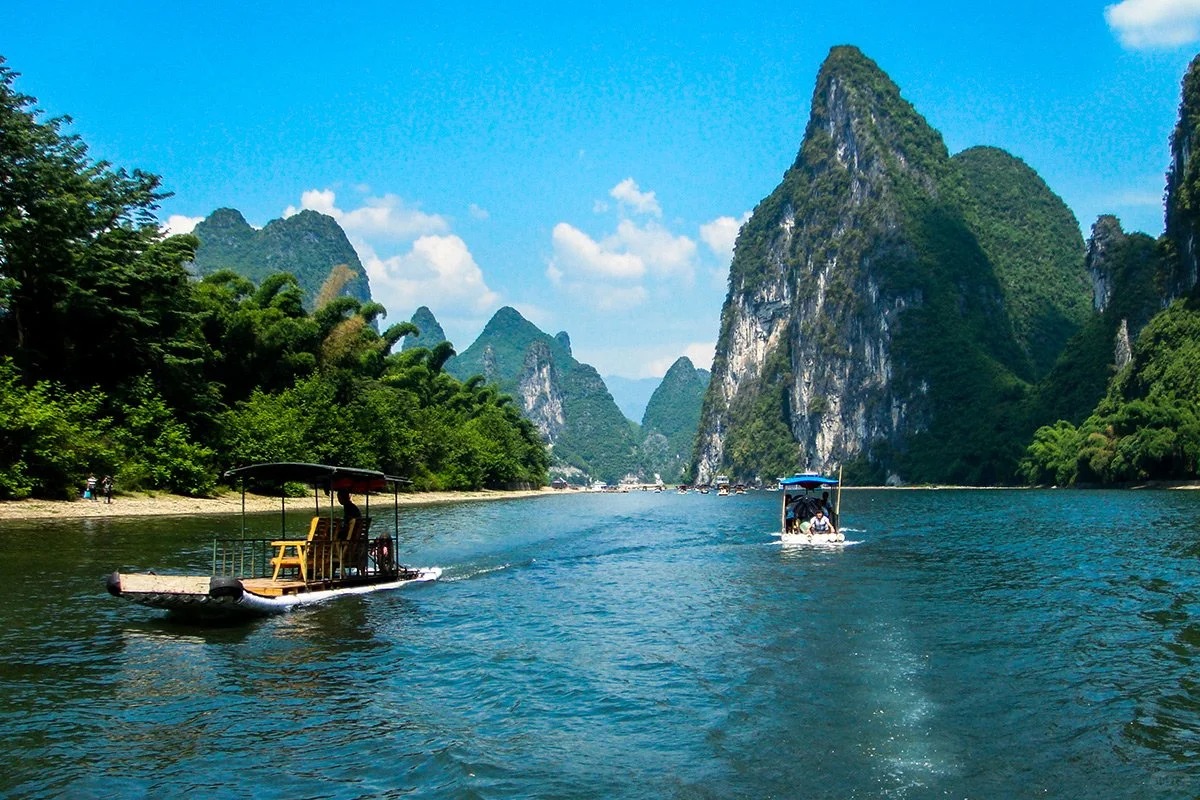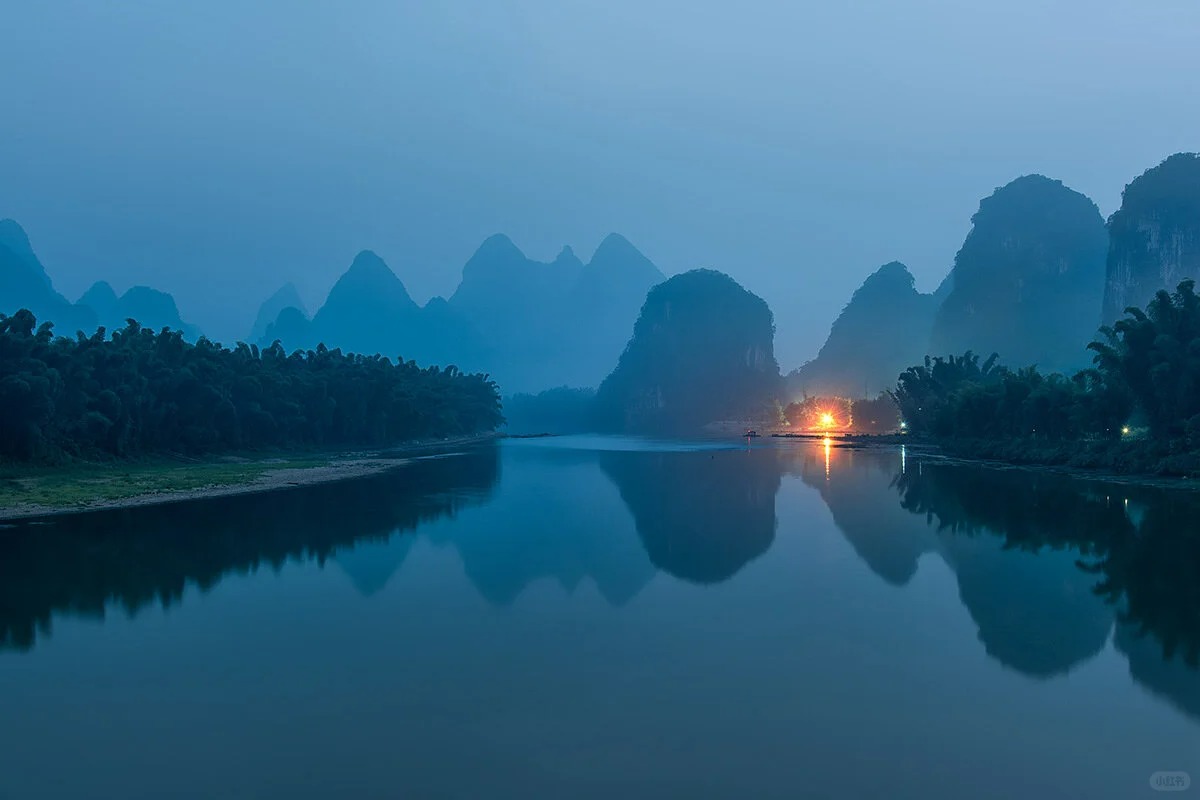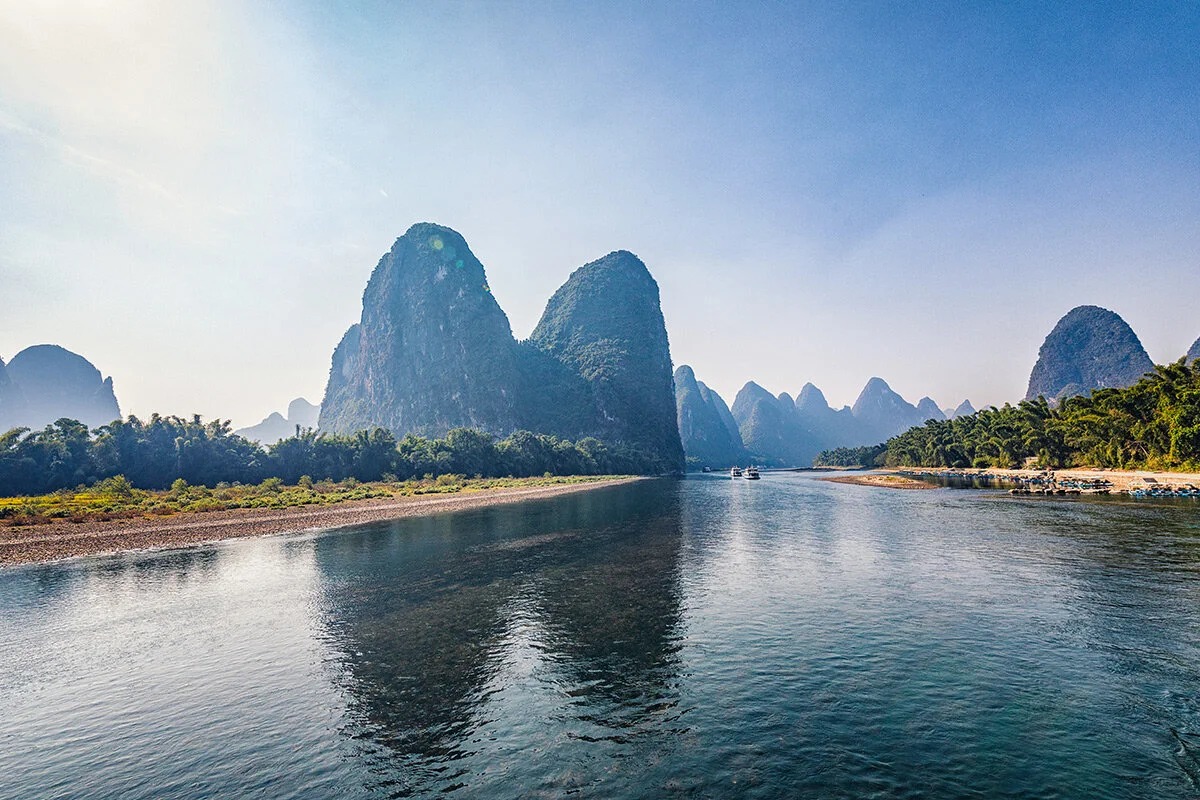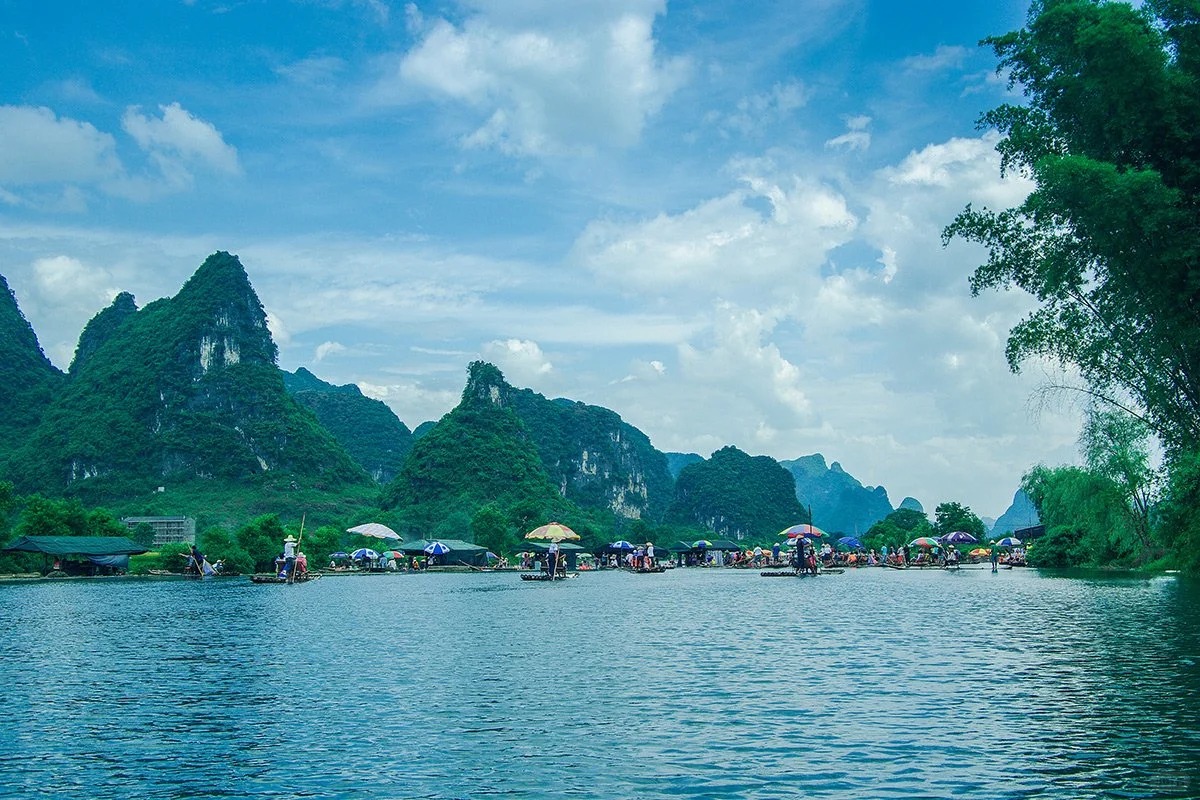Introduction to the Li River and Karst Landscape
Nestled in the heart of Guangxi Province, the Li River (漓江) winds its way through one of China’s most spectacular karst landscapes. This region, renowned for its otherworldly terrain, showcases nature’s sculptural prowess in the form of towering limestone peaks, mysterious caves, and a serpentine river that seems to dance between the mountains.
Karst topography, characterized by its dissolved bedrock and unique surface features, is the result of millions of years of geological processes. In the case of the Li River area, rainwater has slowly eroded the limestone, creating a breathtaking panorama of pinnacles, sinkholes, and underground caverns that draw visitors from around the world.

Geological Wonders of the Li River Valley
The Li River Valley is a testament to the patient artistry of nature. Majestic limestone peaks, some reaching heights of over 300 meters, stand like sentinels along the riverbanks. These formations, shaped by wind and water over countless millennia, create a landscape that seems almost too fantastical to be real.
Among the most famous karst features are:
- Moon Hill: A natural arch resembling a moon hanging in the sky
- Elephant Trunk Hill: A hill formation that uncannily resembles an elephant drinking from the river
- Nine Horse Fresco Hill: Where observers can try to spot nine horses in the rock face
The Li River itself has played a crucial role in sculpting this landscape, its waters carving paths through the limestone and contributing to the erosion that gives the region its distinctive character.
| Feature | Description |
|---|---|
| Karst Type | Tower Karst |
| Age | Approximately 360 million years |
| Key Formations | Moon Hill, Elephant Trunk Hill, Nine Horse Fresco Hill |
| River Length | 83 km (Guilin to Yangshuo) |
While karst landscapes can be found worldwide, from Croatia’s Plitvice Lakes to Vietnam’s Ha Long Bay, the Li River karst region stands out for its sheer scale and the harmony between its peaks and waterways.
The Li River Experience
Experiencing the Li River and its karst wonders is a journey into a living Chinese landscape painting. Visitors can choose between luxury cruise boats offering panoramic views or traditional bamboo rafts for a more intimate encounter with the river.
The classic route from Guilin to Yangshuo offers numerous highlights:
- Mist-shrouded peaks at dawn
- Reflections of limestone giants in calm waters
- Glimpses of rural life along the riverbanks
For photography enthusiasts, the stretch near Xingping provides the iconic view featured on the 20 Yuan banknote. The scenery changes dramatically with the seasons, from lush green summers to misty, ethereal winters.

Cultural Significance and Human History
The Li River karst region has been home to human settlements for thousands of years. Ancient cave dwellings and rock art testify to early human habitation, while traditional fishing villages still dot the riverbanks.
This landscape has profoundly influenced Chinese art and philosophy. Countless poems and paintings have attempted to capture its beauty, with the region serving as a source of inspiration for artists seeking to portray the harmony between humans and nature.
Today, while modernization has touched the area, traditional practices like cormorant fishing continue, offering glimpses into a way of life that has endured for generations.
Activities and Adventures in the Karst Mountains
Beyond river cruises, the karst landscape offers a playground for adventure seekers:
- Rock climbing on limestone cliffs near Yangshuo
- Exploring vast cave systems like the Silver Cave
- Cycling through picturesque villages and rice paddies
- Soaring above the peaks in hot air balloons for breathtaking aerial views
These activities allow visitors to engage with the landscape from different perspectives, appreciating its beauty and complexity up close and from afar.

Environmental Conservation and Challenges
The unique ecosystem of the Li River karst region faces numerous challenges:
- Balancing tourism development with environmental protection
- Managing agricultural runoff and urban pollution
- Mitigating the impacts of climate change on water levels and biodiversity
Conservation efforts focus on sustainable tourism practices, improving water quality, and preserving the delicate balance of the karst ecosystem. Educating visitors about the fragility of this landscape is crucial to its long-term preservation.
Practical Travel Information
To explore the Li River and karst mountains:
- Fly into Guilin Liangjiang International Airport
- Take a river cruise or bus to Yangshuo
- Allow at least 3-4 days to explore the region thoroughly

The best times to visit are spring (April-May) and autumn (September-October) when the weather is pleasant and the scenery is at its most beautiful.
| Season | Highlights | Considerations |
|---|---|---|
| Spring | Comfortable temperatures, lush greenery | Occasional rain |
| Summer | Vibrant landscapes, good water levels | Hot, humid, crowded |
| Autumn | Clear skies, ideal for photography | Popular season, book in advance |
| Winter | Misty, ethereal scenery | Cooler temperatures, lower water levels |
Accommodation options range from luxury resorts in Guilin to charming guesthouses in Yangshuo and eco-lodges nestled in the karst hills. Don’t miss trying local specialties like Guilin rice noodles, beer fish, and osmanthus cake.
The Li River and its karst mountain landscape offer a journey into a world where nature’s artistry is on full display. As you glide along the river, surrounded by towering peaks and reflected beauty, you’ll understand why this region has captivated the Chinese imagination for millennia. Whether you’re seeking adventure, inspiration, or simply a moment of awe in the face of natural wonders, the Li River karst region promises an unforgettable experience that will linger in your memory long after you’ve returned home. It’s a place where each bend in the river reveals a new masterpiece, inviting you to pause, reflect, and marvel at the extraordinary beauty of our planet.





